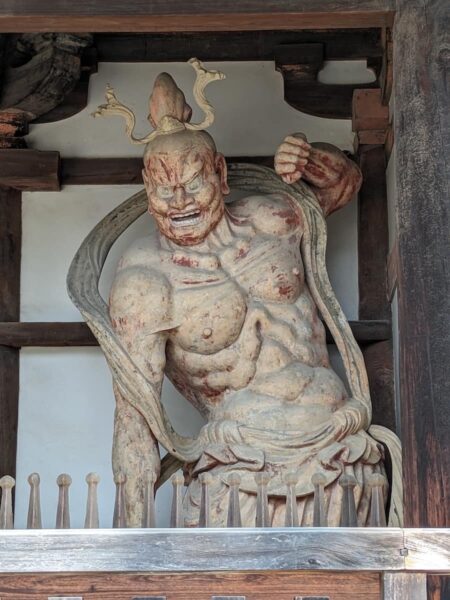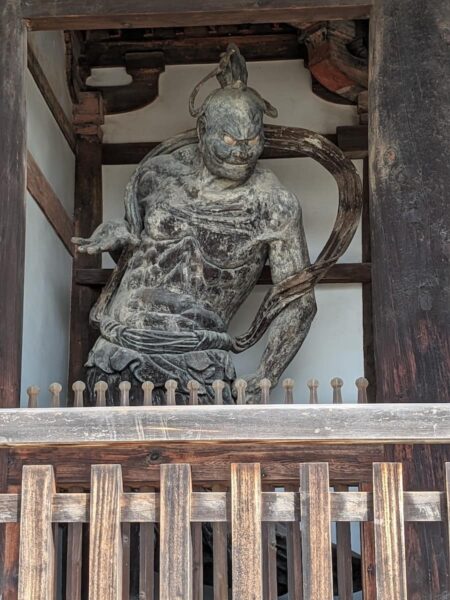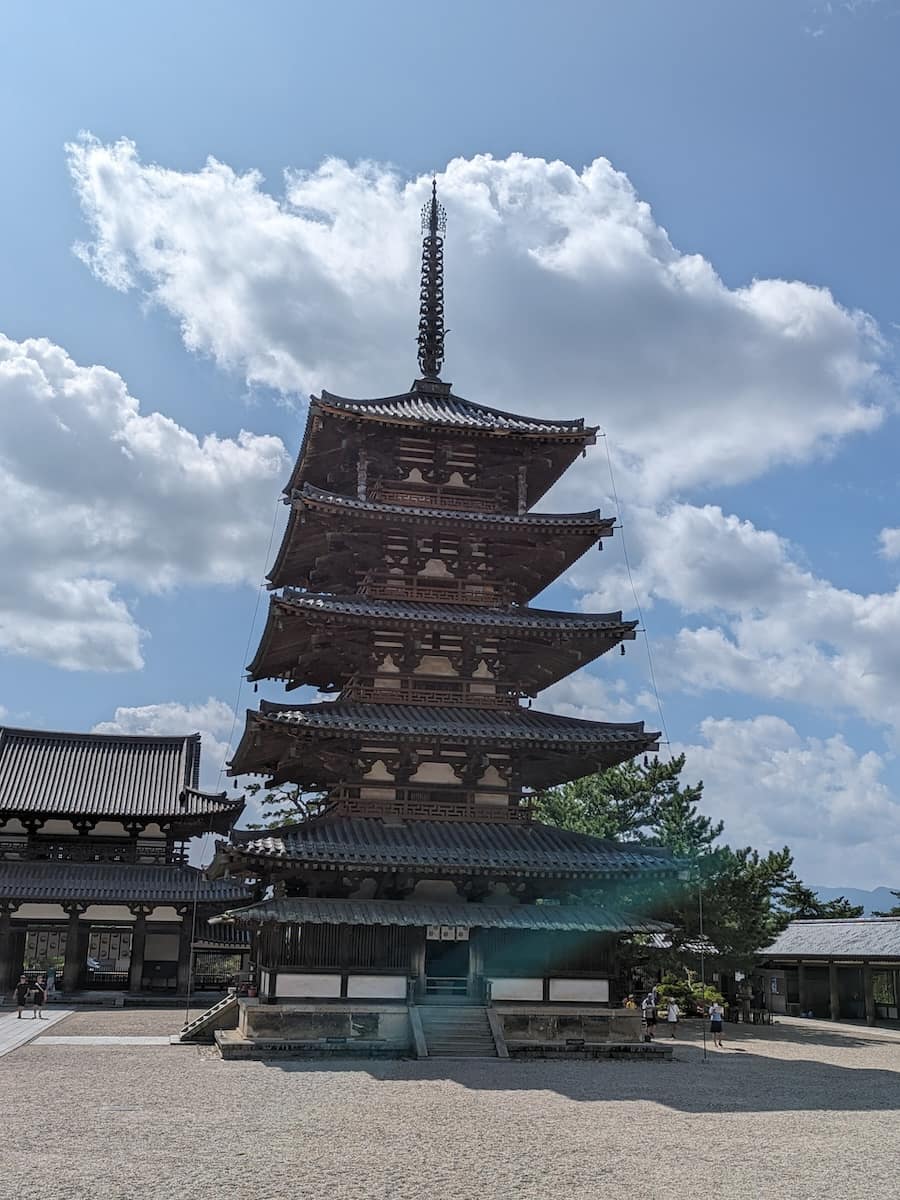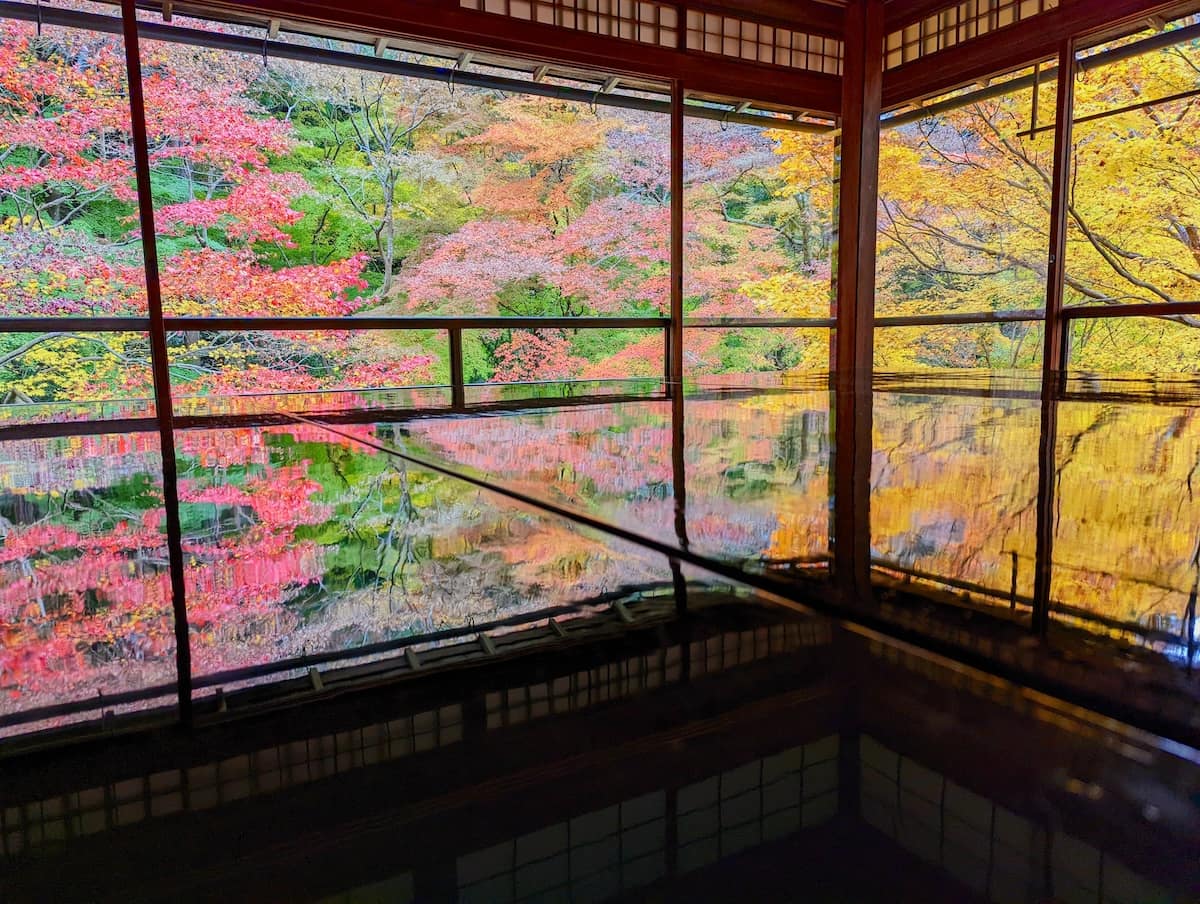Many Japanese people might remember learning about the ancient Hōryū-ji Temple in Nara from their history classes.
Established in the 7th century (607 AD), this temple associated with Prince Shōtoku is said to be the world’s oldest wooden building.

In 1993, Hōryū-ji Temple, along with its surrounding Buddhist structures, was designated as a World Heritage Site.
This article will introduce how to get to Hōryū-ji Temple and its highlights.
Directions to Hōryū-ji Temple (Access) and Business Hours, Admission Fees
How to Get to Hōryū-ji Temple
Hōryū-ji Temple is located in the town of Ikaruga in Nara Prefecture.
Although there is a “Hōryū-ji Station” on the JR Yamatoji Line, it is about 1.6 km from the station, approximately a 25-minute walk. There is a bus service from the station, but it doesn’t run very often, so planning ahead is advisable.
(Reference: Timetable Search – Nara Kotsu Bus Navi web)
If possible, traveling by car is best to Hōryū-ji Temple, and if driving is challenging, combining JR trains with a bus or taxi would be the next best option.
There are many parking lots around Hōryū-ji Temple, but the fees vary significantly. When I visited, the parking lots closer to the temple were more affordable than those closer to the entrance.

It’s recommended to check the parking lots near the temple entrance before settling for the first one you find.
Business Hours and Admission Fees of Hōryū-ji Temple
Business hours (visiting hours) of Hōryū-ji Temple are as follows:
[list class=”li-chevron li-mainbdr main-c-before”]
- February 22 to November 3 → 8:00 AM to 5:00 PM
- November 4 to February 21 → 8:00 AM to 4:30 PM
[/list]
The admission fees are as follows. They also cover the West Precinct, Great Treasure Hall, and East Precinct.
[list class=”li-chevron li-mainbdr main-c-before”]
- Individuals: Adults 1,500 yen, Elementary School Students 750 yen
- Groups (30 or more): Adults 1,200 yen, University/High School Students 1,050 yen, Middle School Students 900 yen, Elementary School Students 600 yen
- Disability Discount: The person and one caregiver (two for wheelchair users) 750 yen, Elementary School Students 370 yen
[/list]
For the latest business hours and fees, please always check the official website of Hōryū-ji Temple.
Highlights of Hōryū-ji Temple
While Hōryū-ji Temple is famous for its Five-Story Pagoda, it actually has a vast premises with many notable spots to visit. Here are some highlights to check out:
Main Hall and Five-Story Pagoda
Right near the entrance of Hōryū-ji Temple are the Main Hall (Kondō) and the Five-Story Pagoda (Gojū-no-tō).
The Main Hall houses the principal Buddha triad, and its interior walls and Buddha statues are masterpieces of Asuka period Buddhist art. (Note: No photography inside)

The Five-Story Pagoda, known for its beauty and as a symbol of Hōryū-ji Temple, has a majestic presence that belies its age of over 1400 years.

Great Treasure Hall
A short walk from the area with the Five-Story Pagoda is the Great Treasure Hall.
Hōryū-ji Temple exhibits many treasured artifacts here, including national treasures and important cultural properties.
History enthusiasts will be moved by the remarkable treasures, and even those not particularly interested in history will be impressed by how well these ancient artifacts have been preserved.
Vajra Warrior Statues at the Central Gate
Right along the approach to Hōryū-ji Temple is the Central Gate.

The Central Gate is flanked by Vajra Warrior statues, which are believed to be the oldest extant Nio statues.
The reddish statue on the right is known as “Agyō“.

And the bluish statue on the left as “Ungyō“.

Both statues are incredibly imposing, and even those with little interest in history are sure to be awed.
Summary of How to Get to and Highlights of Hōryū-ji Temple in Nara
I only knew about the Five-Story Pagoda before visiting, but I was surprised to find many other sights and how spacious the temple grounds were.
If you’re planning a thorough visit, it’s advisable to allocate at least two hours, including time to walk around.
Hōryū-ji Temple is a place that everyone has probably heard about at least once in their history classes.
It’s a spot worth visiting at least once in your lifetime.



Comments